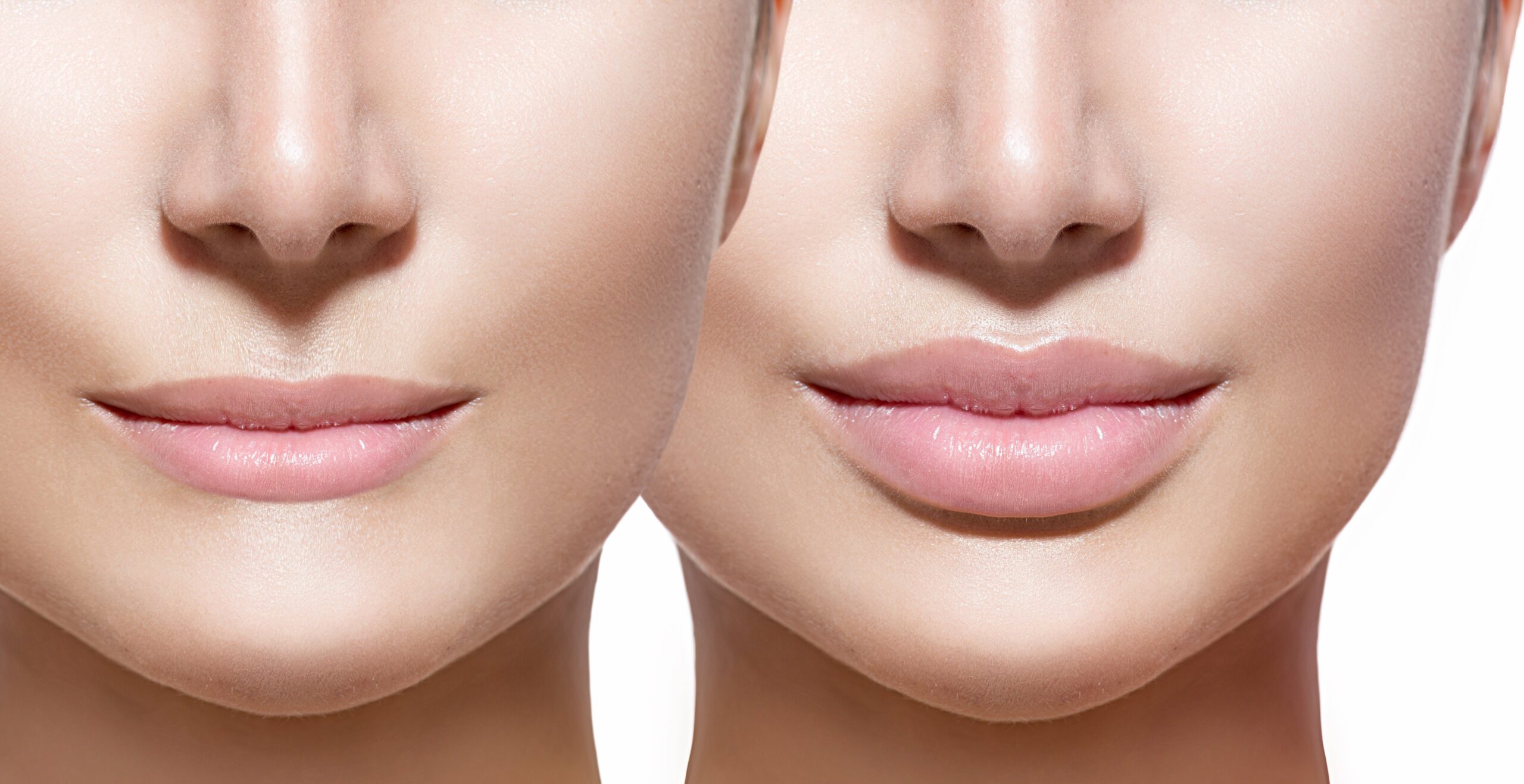
Welcome to the fascinating world of lip fillers, where ancient practices meet modern innovations, and beauty ideals continually evolve. In this exploration, we delve into 25 historical facts and numerical trivia surrounding lip augmentation. From the early days of using beeswax and herbs to enhance lips in ancient civilizations to the cutting-edge hyaluronic acid fillers of today, we unravel the journey of lip enhancement through time. Join us as we uncover significant dates, influential figures, and intriguing records in the realm of lip fillers, shedding light on the cultural, technological, and societal shifts that have shaped this cosmetic phenomenon.
Discovery of Lip Augmentation: The concept of lip augmentation traces its roots back to ancient civilizations, where individuals sought ways to enhance the aesthetic appeal of their lips. Archaeological evidence suggests that ancient Mesopotamians, Egyptians, and Greeks experimented with natural ingredients like beeswax, plant extracts, and minerals to achieve fuller lips. These early practices laid the foundation for the evolution of lip augmentation techniques over the centuries.
Silicone Introduction (1960s): The 1960s marked a significant milestone in the field of lip augmentation with the introduction of silicone as a filler material. Silicone injections provided a more durable and predictable outcome compared to earlier methods. Initially used for various cosmetic procedures, silicone became a popular choice for lip augmentation due to its stability and long-lasting effects. However, over time, concerns regarding safety and potential complications led to the development of alternative materials.
Collagen Boom (1980s): The 1980s witnessed a surge in the popularity of collagen injections for lip augmentation. Bovine collagen, sourced from cows, became a widely used filler. Collagen injections offered a temporary solution for achieving fuller lips, and their popularity soared during this era. Despite their effectiveness, collagen fillers posed some limitations, such as the risk of allergic reactions and a shorter duration of results compared to later-generation fillers.
Hyaluronic Acid Emergence (2000s): In the early 2000s, the advent of hyaluronic acid-based fillers revolutionized the field of lip augmentation. Products like Restylane and Juvederm gained prominence for their natural-looking results and the ability to provide a temporary enhancement. Hyaluronic acid, a substance naturally found in the body, attracted users seeking a safer and more versatile alternative to earlier fillers. This era marked a shift toward injectables with fewer side effects and a more customizable approach to achieving desired lip shapes.
FDA Approval (2003): The year 2003 proved pivotal for the cosmetic industry as Restylane, a hyaluronic acid-based filler, received approval from the U.S. Food and Drug Administration (FDA). This marked a crucial step in establishing the safety and efficacy of hyaluronic acid fillers. FDA approval increased public confidence in the use of these fillers for lip augmentation, contributing to their widespread adoption by practitioners worldwide.
Kylie Jenner’s Influence (2010s): The 2010s witnessed a cultural phenomenon surrounding lip augmentation, largely influenced by the transformation of reality TV star Kylie Jenner. In 2015, Kylie candidly acknowledged her decision to enhance her lips with fillers, sparking a surge in interest and demand for the procedure, particularly among younger demographics. The “Kylie Jenner effect” contributed to a more open conversation about cosmetic enhancements, destigmatizing the use of lip fillers and making them a mainstream beauty trend.
Lip Filler Statistics (2022): As of 2022, lip filler procedures had become one of the most commonly performed cosmetic treatments globally. Millions of individuals sought the procedure annually to achieve fuller and more defined lips. The statistical data underscored the widespread acceptance of lip augmentation as a routine cosmetic enhancement, reflecting evolving beauty standards and a growing emphasis on facial aesthetics.
Average Cost: The cost of lip filler procedures varies based on factors such as geographic location, the reputation of the practitioner, and the type of filler used. On average, individuals could expect to pay anywhere from $500 to $2,000 per syringe for lip fillers. The cost often includes the consultation, the actual procedure, and any necessary follow-up appointments. The financial investment in lip augmentation reflects both the growing demand for the procedure and the expertise required to achieve natural and aesthetically pleasing results.
Duration of Results: The longevity of lip filler results typically ranges from 6 months to a year. Factors influencing the duration include the type of filler used, the individual’s metabolism, and lifestyle choices. Hyaluronic acid fillers, while temporary, provide the advantage of reversibility, allowing individuals to adjust or discontinue the treatment if desired. This characteristic aligns with the modern preference for non-permanent enhancements, giving individuals the flexibility to adapt their cosmetic choices over time.
Largest Lips on Record: While lip fillers are renowned for their transformative effects, the world record for the largest natural lips belongs to Andrea Ivanova, a woman who has undergone numerous lip filler procedures. Her lips, often described as “bee-stung,” serve as a testament to the possibilities of lip augmentation. While individual preferences for lip size vary, the record highlights the extremes to which some individuals are willing to go to achieve their desired aesthetic.
Youngest Recipient: In recent years, there has been a trend of younger individuals seeking lip filler treatments. Some practitioners have reported performing lip augmentations on clients as young as 18. While age requirements for cosmetic procedures vary by country and practitioner, the increasing interest among younger demographics raises ethical considerations regarding the appropriate age for such interventions. Advocates argue that responsible practitioners prioritize thorough consultations and consider the psychological maturity of younger clients before proceeding with lip filler treatments.
Most Expensive Lip Filler Procedure (2019): In 2019, reports surfaced about an exceptionally high-cost lip filler procedure. This particular treatment, rumored to cost around $25,000, gained attention for its exclusivity. The exorbitant price tag was attributed to the use of premium fillers and the reputation of the practitioner. While such cases are rare, they highlight the luxury aspect associated with certain cosmetic procedures and the influence of practitioner expertise and premium materials on overall costs.
Hydrogel Controversy: Hydrogel, a non-FDA-approved substance, became the center of controversy in the realm of lip fillers. Some individuals sought hydrogel injections for their purported longer-lasting effects. However, the use of unapproved substances raised serious health concerns, leading to complications in some cases. This controversy underscored the importance of using FDA-approved fillers and the potential risks associated with seeking non-standard procedures from unqualified practitioners.
FDA Warnings (2021): In 2021, the U.S. FDA issued warnings about the risks associated with unapproved dermal fillers, emphasizing the importance of seeking qualified professionals. The warnings aimed to educate the public about the potential dangers of obtaining injectable treatments from unlicensed or inexperienced practitioners. These cautionary measures were part of ongoing efforts to ensure the safety and well-being of individuals seeking cosmetic enhancements, urging them to prioritize reputable sources for such procedures.
Global Lip Filler Market (2022): The lip filler market witnessed unprecedented growth, reaching a valuation in the billions of dollars in 2022. This staggering figure reflected the global demand for lip augmentation procedures and the thriving cosmetic industry. The market’s expansion highlighted evolving beauty standards, increased social media influence, and a cultural shift toward embracing cosmetic enhancements as routine self-care practices.
Celebrities and Lip Fillers: The openness of celebrities about their experiences with lip fillers played a crucial role in destigmatizing cosmetic procedures. Many well-known personalities, including actresses, models, and influencers, have publicly acknowledged using lip fillers to enhance their features. This transparency has contributed to a more accepting attitude toward cosmetic interventions, prompting individuals to consider lip augmentation as a mainstream and accessible means of achieving desired aesthetics.
Record for Most Lip Filler Procedures: An individual from the United Kingdom holds the record for undergoing over 50 lip filler procedures. This notable case brings attention to the concept of repetitive treatments and the personal choices individuals make in pursuing their desired appearance. It also raises discussions about the potential risks associated with frequent procedures and the importance of responsible and ethical practices in the field of cosmetic enhancements.
Botox and Lip Fillers Combination: Some individuals opt for a combination of Botox and lip fillers to achieve a more comprehensive facial rejuvenation. While Botox targets wrinkles by temporarily paralyzing muscles, lip fillers add volume and definition to the lips. The synergistic effects of these treatments create a harmonious balance in facial aesthetics, leading to a refreshed and youthful appearance. This combination approach highlights the versatility of non-surgical cosmetic procedures in addressing multiple facets of facial aging.
Non-Surgical Lip Augmentation Techniques: In addition to injectable fillers, non-surgical lip augmentation techniques have gained popularity. PDO (polydioxanone) threads, for instance, involve the insertion of dissolvable threads beneath the skin to lift and contour the lips. Laser treatments are also utilized to stimulate collagen production, resulting in improved lip texture and definition. These non-invasive alternatives offer individuals less downtime and fewer side effects compared to traditional surgical procedures.
Lip Filler Complications Rate: Complications from lip fillers are generally rare, with a low percentage of patients experiencing adverse reactions or side effects. Common side effects include temporary swelling, bruising, and redness at the injection site. Severe complications, such as infection or allergic reactions, are extremely rare when the procedure is performed by a qualified and experienced practitioner. The low incidence of complications contributes to the overall safety profile of lip filler treatments when conducted under appropriate conditions.
Lip Filler Awareness Campaigns: Various organizations have launched awareness campaigns to educate the public about the risks and benefits of lip fillers. These campaigns emphasize the importance of seeking qualified and licensed practitioners, understanding the potential side effects, and making informed decisions. By fostering awareness, these initiatives aim to empower individuals with the knowledge needed to navigate the cosmetic enhancement landscape responsibly, ensuring their safety and satisfaction with the results.
Lip Filler Training Programs: Medical professionals seeking to administer lip fillers undergo specialized training programs to ensure safe and effective procedures. These programs typically cover anatomy, injection techniques, patient assessment, and post-treatment care. Training and certification are crucial elements in maintaining industry standards and promoting ethical practices among practitioners. As the demand for cosmetic procedures continues to rise, these programs play a vital role in shaping a skilled and responsible workforce.
Oldest Known Lip Enhancement Recipe: The practice of lip enhancement dates back to ancient Mesopotamia, where evidence suggests the use of crushed gemstones and herbs in creating a lip balm. This ancient recipe showcases early human ingenuity in seeking beauty enhancements. While the ingredients and methods have evolved over time, the historical roots of lip augmentation reveal a longstanding fascination with enhancing facial features for aesthetic purposes.
Bee Venom Lip Plumping (Ancient Egypt): In ancient Egypt, bee venom was sometimes used as a lip plumper. The venom, containing compounds that stimulate blood flow and collagen production, was applied to the lips to create a temporary swelling effect. This historical practice provides insight into the resourcefulness of ancient cultures in using natural elements for cosmetic purposes. The use of bee venom also reflects the early recognition of substances that could enhance lip volume and appearance.
Global Lip Filler Trends: Lip filler trends vary worldwide, influenced by cultural perceptions of beauty, fashion, and media representation. In some regions, a preference for fuller lips may dominate, while others may prioritize a more natural look. These trends reflect the dynamic nature of beauty standards and highlight the role of cultural diversity in shaping aesthetic preferences. Understanding global lip filler trends is essential for practitioners to cater to a diverse clientele and adapt to evolving beauty ideals.









